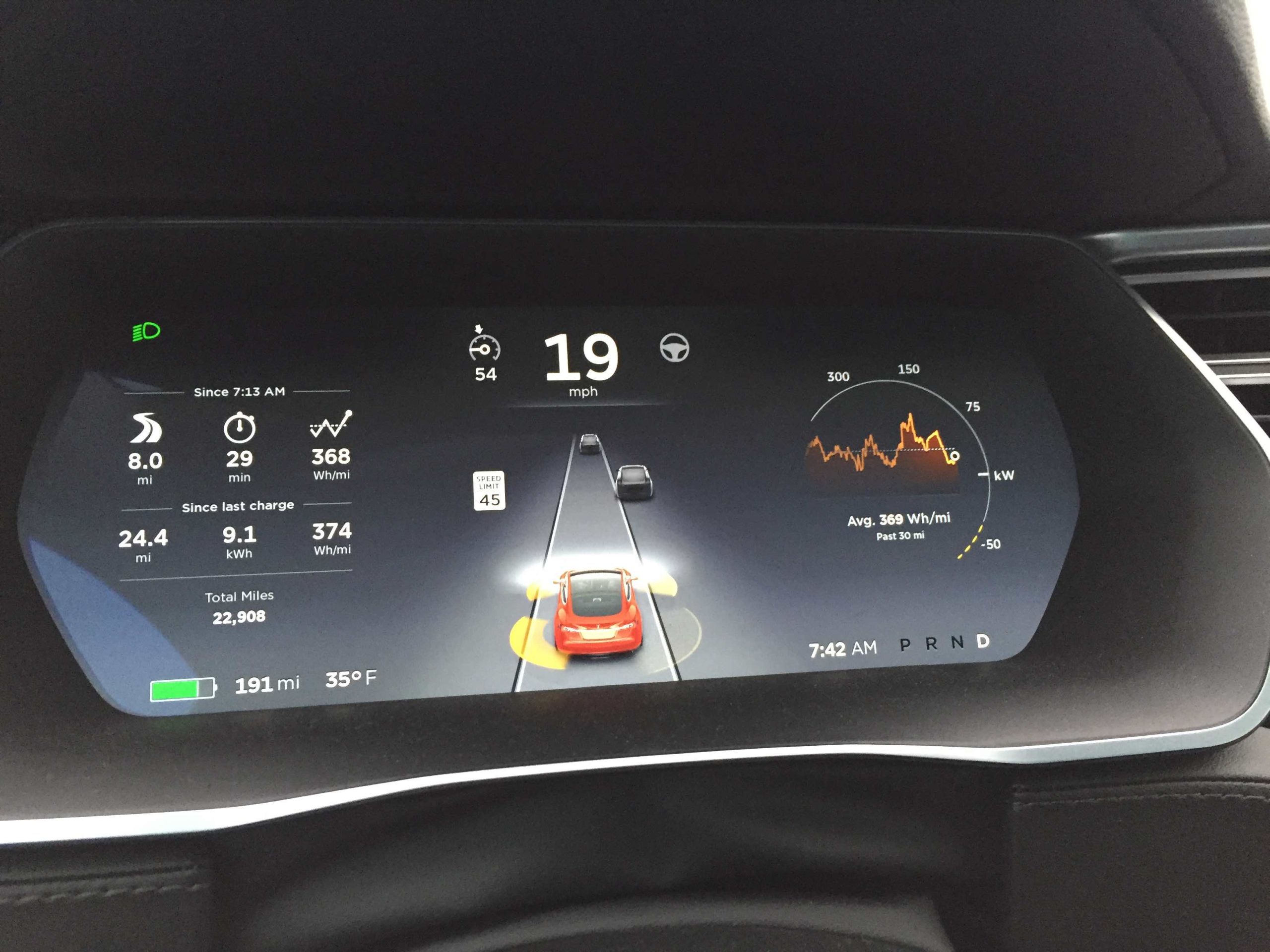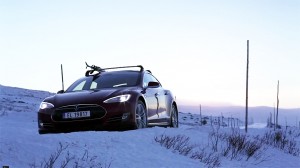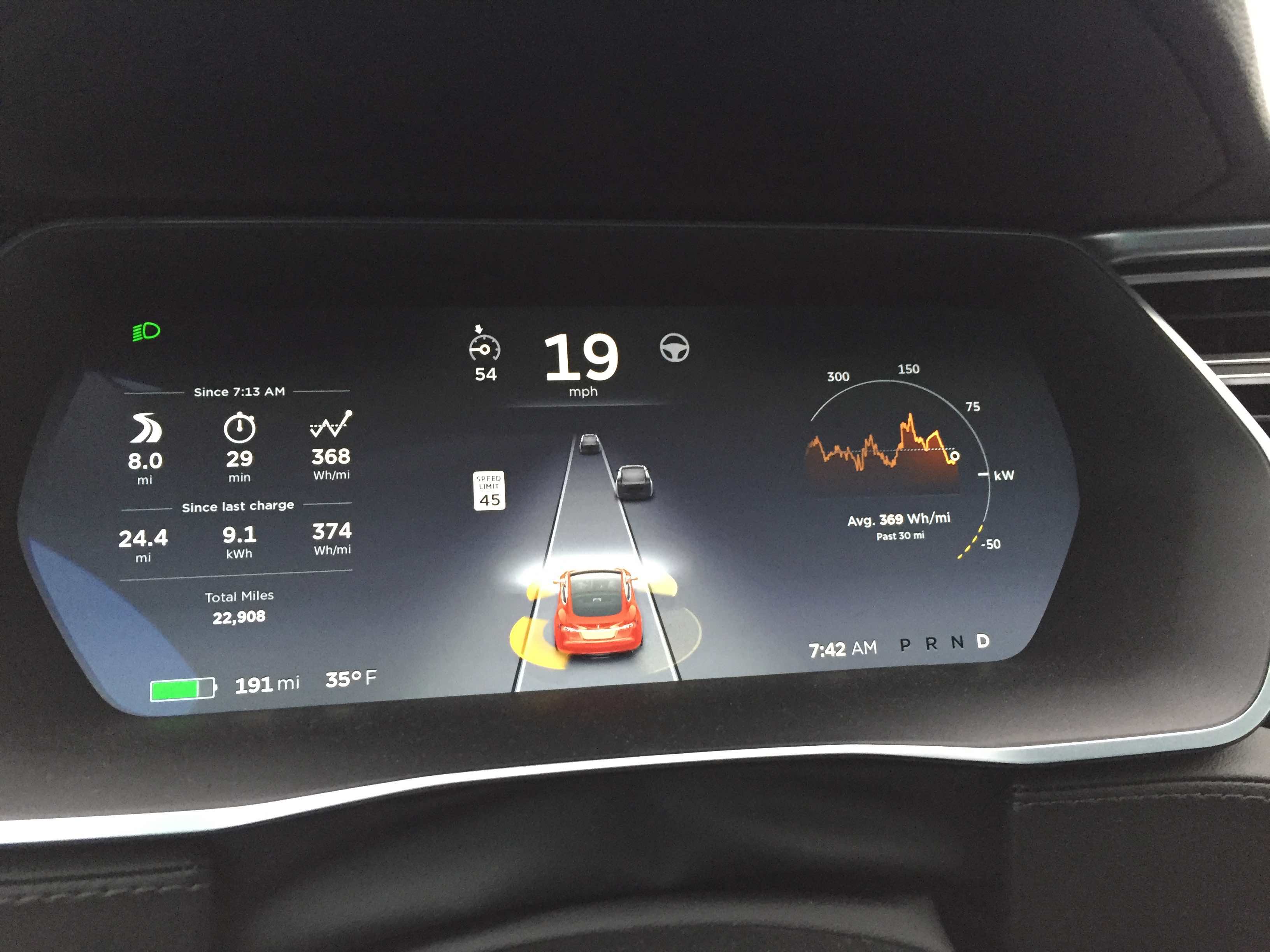Lifestyle
Feeling Safe in the Tesla Model S

I won’t tell you that you can’t put a price on safety, or that surviving a serious car accident is worth all the money in the world. I won’t tell you that most people who can afford it are willing to pay a premium to be safe. I’ll leave that up to anyone who has ever been or known someone seriously injured or worse in a motor vehicle accident. They will tell you that safety is of the utmost importance.
I have only ever been in a moderate accident and can tell you that I wouldn’t wish it on anyone. Just last week I discussed a rollover accident that a friend and his wife had just experienced in their SUV. They escaped with barely a bruise. When I asked if they felt any sort of indebtedness to their particular car, I was informed they had already purchased an exact replacement. You see, they had chosen it based on just two very specific criteria they considered to be non-negotiable: that it be a compact SUV and that it have a 5-star crash test rating from the NHTSA.
 But what about those of us who have never been in a horrific accident or never will be? Perhaps for us, it’s the feeling of safety that’s worth it. Friday morning when I work up there was wet snow and slush on the ground. My husband looked over and said to me “Would you feel more comfortable taking Ellie?” Of course I would! The Tesla is great in snow, my other car is not. I’ve had a few bad winters in my Hyundai Genesis Coupe. It is a rear wheel drive sports coupe that can’t handle even a trace of snow, slush or ice without fishtails, slips and the overwhelming feeling that you have no control over the car. I’ve had many uncomfortable driving experiences with it: white-knuckles, stress and feeling that there’s no way I’m making it to my destination without an incident. It severely diminishes how good I feel on the road. In fact, it downright scares me. To me, just like how confidence in other arenas leads to success, feeling safe really means something. I’m happy that he let me take the car, as my commute is longer and his is a straight run on a major road. So there I was, driving along in my Telsa, feeling 100% comfortable; feeling 100% safe. I was feeling like the snow and slush that was on the road just wasn’t there. At no time during the whole commute did I slip or lose grip or take longer to stop than I would have on dry roads.
But what about those of us who have never been in a horrific accident or never will be? Perhaps for us, it’s the feeling of safety that’s worth it. Friday morning when I work up there was wet snow and slush on the ground. My husband looked over and said to me “Would you feel more comfortable taking Ellie?” Of course I would! The Tesla is great in snow, my other car is not. I’ve had a few bad winters in my Hyundai Genesis Coupe. It is a rear wheel drive sports coupe that can’t handle even a trace of snow, slush or ice without fishtails, slips and the overwhelming feeling that you have no control over the car. I’ve had many uncomfortable driving experiences with it: white-knuckles, stress and feeling that there’s no way I’m making it to my destination without an incident. It severely diminishes how good I feel on the road. In fact, it downright scares me. To me, just like how confidence in other arenas leads to success, feeling safe really means something. I’m happy that he let me take the car, as my commute is longer and his is a straight run on a major road. So there I was, driving along in my Telsa, feeling 100% comfortable; feeling 100% safe. I was feeling like the snow and slush that was on the road just wasn’t there. At no time during the whole commute did I slip or lose grip or take longer to stop than I would have on dry roads.
It’s hard to describe the comfort I felt that morning. I just knew that this car, along with safe and sensible driving would keep me from causing an accident. I also knew that if someone else who was not driving as sensibly happened to crash in to me, I would have had a very low chance of serious injury. That is what safety means. That is what Tesla has created. And that is what I had the privilege of experiencing that morning.
Safety in the Tesla goes far beyond good handling in snow and slush. The car was built from the ground up to exude safety in every measure. Recent software updates have even improved safety with additional features. Just this week I noticed that the color of the dash graphics on Autopilot enabled vehicles that show how close you are to another vehicle or object are more fluid than I originally thought. They don’t just go from white to yellow, then orange to red. In fact, those colors change slightly from white to pale yellow, become a more vivid yellow, then darken as they approach orange territory.

The right rear of the car shows the lightest yellow while right front shows a lighter yellow. On the left side of the car where a construction barrier was close by, the graphic darkened as I got closer.
While a sensor showing your proximity to objects may or may not have much an impact on the outcome of a serious crash, this is just one more feature that gives you the confidence to operate a Tesla and feel safe while you do it.
So again, we all value our safety. Now I think it’s time we also place as high a value on feeling safe.

Lifestyle
Tesla Model S Plaid battles China’s 1500 hp monster Nurburgring monster, with surprising results
There is just something about Tesla’s tuning and refinement that makes raw specs seem not as game-changing.

The Tesla Model S Plaid has been around for some time. Today, it is no longer the world’s quickest four-door electric sedan, nor is it the most powerful. As per a recent video from motoring YouTube channel Carwow, however, it seems like the Model S Plaid is still more than a match for some of its newer and more powerful rivals.
The monster from China
The Xiaomi SU7 Ultra is nothing short of a monster. Just like the Model S Plaid, it features three motors. It also has 1,548 hp and 1,770 Nm of torque. It’s All Wheel Drive and weighs a hefty 2,360 kg. The vehicle, which costs just about the equivalent of £55,000, has been recorded setting an insane 7:04.957 at the Nurburgring, surpassing the previous record held by the Porsche Taycan Turbo GT.
For all intents and purposes, the Model S Plaid looked outgunned in Carwow’s test. The Model S Plaid is no slouch with its three motors that produce 1,020 hp and 1,420 Nm of torque. It’s also a bit lighter at 2,190 kg despite its larger size. However, as the Carwow host pointed out, the Model S Plaid holds a 7:25.231 record in the Nurburgring. Compared to the Xiaomi SU7 Ultra’s record, the Model S Plaid’s lap time is notably slower.
Real-world tests
As could be seen in Carwow’s drag races, however, Tesla’s tech wizardry with the Model S Plaid is still hard to beat. The two vehicles competed in nine races, and the older Model S Plaid actually beat its newer, more powerful counterpart from China several times. At one point in the race, the Xiaomi SU7 Ultra hit its power limit due to its battery’s temperature, but the Model S Plaid was still going strong.
The Model S Plaid was first teased five years ago, in September 2020 during Tesla’s Battery Day. Since then, cars like the Lucid Air Sapphire and the Xiaomi SU7 Ultra have been released, surpassing its specs. But just like the Model Y ended up being the better all-rounder compared to the BYD Sealion 7 and the MG IM6, there is just something about Tesla’s tuning and refinement that makes raw specs seem not as game-changing.
Check out Carwow’s Model S Plaid vs Xiaomi SU7 drag race video below.
Lifestyle
500-mile test proves why Tesla Model Y still humiliates rivals in Europe
On paper, the BYD Sealion 7 and MG IM6 promised standout capabilities against the Model Y.

BYD is seeing a lot of momentum in Europe, so much so that mainstream media has taken every opportunity to argue that the Chinese automaker has beaten Tesla in the region. But while BYD sales this year in Europe are rising and Tesla’s registrations remain challenged, the raw capabilities of vehicles like the Model Y are difficult to deny.
This was highlighted in a 500-mile challenge by What Car? magazine, which showed that the new Tesla Model Y is more efficient, cheaper to run, and more reliable than rivals like the BYD Sealion 7, and even the nearly 400 KW-charging MG IM6.
Range and charging promises
On paper, the BYD Sealion 7 and MG IM6 promised standout capabilities against the Model Y. The Sealion 7 had more estimated range and the IM6 promised significantly faster charging. When faced with real-world conditions, however, it was still the Model Y that proved superior.
During the 500-mile test, the BYD nearly failed to reach a charging stop, arriving with less range than its display projected, as noted in a CarUp report. MG fared better, but its charging speeds never reached its promised nearly-400 kW charging speed. Tesla’s Model Y, by comparison, managed energy calculations precisely and arrived at each stop without issue.
Tesla leads in areas that matter
Charging times from 25% to 80% showed that the MG was the fastest at 17 minutes, while Tesla and BYD were close at 28 and 29 minutes, respectively. Overall efficiency and cost told a different story, however. The Model Y consumed 19.4 kWh per 100 km, compared to 22.2 for MG and 23.9 for BYD. Over the full trip, Tesla’s charging costs totaled just £82 thanks to its supercharger network, far below BYD’s £130 and MG’s £119.
What Car? Magazine’s testers concluded that despite BYD’s rapid sales growth and the MG IM6’s seriously impressive charging speeds, Tesla remains the more compelling real-world choice. The Model Y just offers stability, efficiency, and a proven charging infrastructure through its Supercharging network. And as per the magazine’s hosts, the Model Y is even the cheapest car to own among the three that were tested.
Watch What Car? Magazine’s 500-mile test in the video below.
Lifestyle
Tesla Cybertruck slapped with world’s least intimidating ticket, and it’s pure cringe
One cannot help but cringe and feel second-hand embarrassment at the idea of a person just driving around with a stack of these babies.

A Cybertruck parked at Stanford Shopping Center in California was recently hit with what might be the most try-hard piece of paper ever slipped under a wiper blade: a “fake citation” accusing the driver of supporting a “fascist car.”
The note, shared on X by Tesla staff program manager Ryan Torres, quickly made the rounds on X, where it quickly gained attention as an example of how not to protest.
The world’s least intimidating ticket
According to the citation, the supposed “violation” was “driving a fascist car.” The remedial action? Take the bus, call an Uber, or ride a bike. The note also dubbed Elon Musk a “chainsaw-wielding Nazi billionaire.” Now, protests against Tesla and Elon Musk have become commonplace this year, but one cannot help but cringe and feel second-hand embarrassment at the idea of a person just driving around with a stack of fake anti-Tesla/Musk citations.
Torres pointed out the irony himself in his post on X. Tesla currently employs over 140,000 Americans, and SpaceX has put the U.S. firmly back at the top of space technology. As Torres put it, maybe the person behind the world’s least intimidating ticket should “read a book on innovation before vandalizing” other people’s property.
Peak performative clownery
Not to mention that the fake ticket’s logic collapses under its own weight. EVs like the Cybertruck are literally designed to reduce emissions, not “destroy the economy.” If anything, Tesla has bolstered the United States’ economy by fueling jobs in engineering, manufacturing, and clean energy. It’s not the first time a Tesla has been the target of vandalism or politically charged notes, but this one stands out for sheer cringe value.
Torres summed it up neatly: “Peak clownery.” On that point, at least, the citation earns full marks. In a way, though, perhaps cringe fake tickets are not as bad as the literal firebombs that were being thrown at Tesla stores and cars earlier this year because some critics were gleefully misinformed about Elon Musk.








